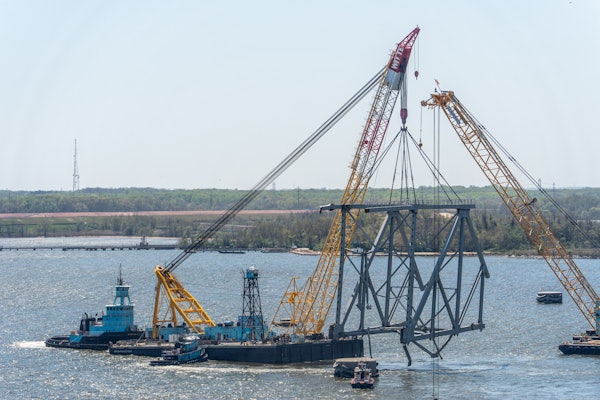By Michael R. Taylor, CAE
Since recycling is one of the ideals of the green movement, demolition professionals have a lot to talk about – we continually recycle land for re-use, whether for a new school or a public park.
In its strategic plan for the next decade, the National Demolition Association has identified environmental stewardship as one of its top priorities. This encompasses practices such as demolition debris recycling, environmental remediation and architectural salvaging. These activities have become an increasingly important part of many demolition contractors’ businesses as they expand vertically into related trades. For some association members, recycling represents 20 to 50 percent of their annual revenue. Not only are they maximizing the use of re-useable and re-saleable materials, they are reducing landfill usage and resultant waste disposal costs.
With increasingly stringent local, state and federal regulations that require the clean-up of facilities, soil and groundwater before a demolition can be completed, many companies have expanded their services to all aspects of remediation, including the removal and disposal of asbestos, lead, mold, PCBs, above-ground and underground tanks, etc. Many firms are now staffed with technical managers, engineers and an experienced hazardous materials labor force to support the effort. It is often more cost-efficient to engage a demolition contractor certified in environmental contracting rather than bringing in an additional firm to handle that aspect of the project.
While the most well-known green building rating system known as LEED (Leadership in Energy and Environmental Design) has no direct rating system for the demolition process, it does address the issue of brownfield redevelopment, which is a growing area for many demolition professionals. The intent is to rehabitate damaged sites where development is complicated by environmental contamination. By re-using this land, it reduces the pressure to build on undeveloped land.
The LEED system also addresses the issue of construction and demolition waste management. Under LEED Credit MR2, projects can earn one point for diverting 50 percent of waste, 2 points for diverting 75 percent of waste, and an additional point under Innovation in Design for diverting 95 percent of waste. The National Demolition Association supports the re-use and recycling of demolition debris whenever it is financially feasible. Many members routinely have recycling rates of 75 percent, while some recycle up to 100 percent of debris generated during a recycling project. There are, of course, economic realities that can affect how much debris can be recycled. Site owners must deal with tight timelines, stringent financing schedules and difficult security issues. There is also the challenge of finding a viable after-market for certain materials.
A number of factors affect how and when demolition professionals use landfills for debris that cannot be re-used. Fines can be levied for not recycling an adequate amount of demolition debris. Along with the need to comply with local ordinances, demolition contractors have other reasons to avoid landfills whenever possible. These include the increasing costs of landfill use, the benefit of tax credits such as those for LEED practices, new mobile recycling technology that makes on-site recycling possible and heightened awareness about promoting a green and sustainable environment.
SOME AFTERMARKETS FLOURISH
Demolition contractors always factor investment recovery into their calculations of what a demolition project will cost. For example, equipment that is obsolete in the United States may be resellable in less developed countries. The flourishing aftermarket for steel and certain types of lumber have also spurred interest in re-use and recycling. Materials at the top of the list of recycled demolition debris are concrete, asphalt pavement, metals, bricks/blocks and wood, nearly all of which is separated out for transport or processed at the jobsite. Some projects promise to yield such a high amount of valuable recyclables, such as those with steel construction, that contractors may perform the demolition at no cost or many even pay the property owner to claim the rights to all recyclable materials.
On the other hand, some materials may present more challenges to a demolition professional contemplating their recycling. Drywall, for instance, can be recycled, but a number of issues involving things such as the age of the drywall (it may contain asbestos) and whether it was painted (it may have been painted with lead paint) make its common, widespread use impractical at this time. New recycling technology, however, is always being developed and refined to handle the materials presently going to the landfill.
In addition, the salvage industry has grown right along with the demolition industry. Usually, contractors are instrumental in achieving the goals of preservationists. Building fa









